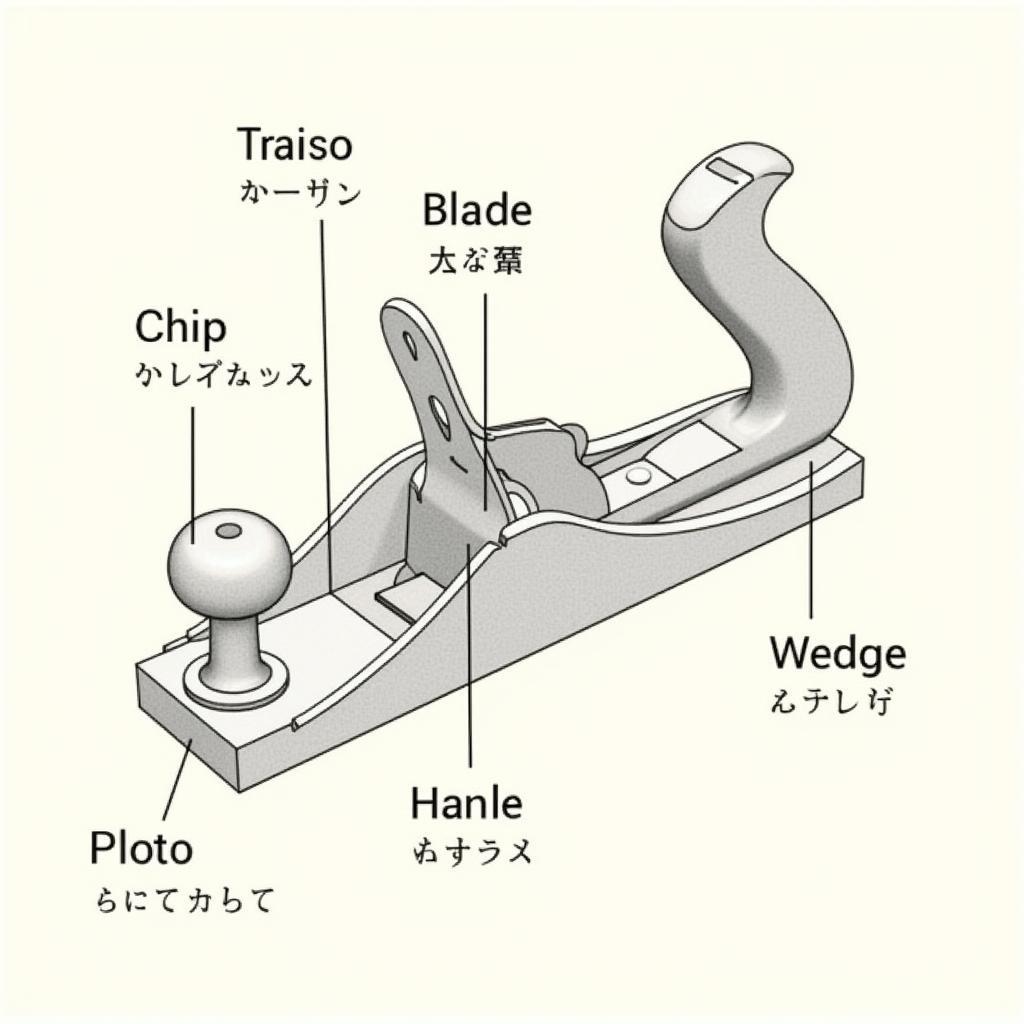Japanese woodworking tools are renowned for their precision, craftsmanship, and durability. Understanding their proper care and use is essential not only for achieving excellent results in your woodworking projects but also for preserving these valuable tools for generations to come. This involves knowing how to select, sharpen, maintain, and store them correctly.
Choosing the Right Japanese Woodworking Tools
The first step in caring for your Japanese woodworking tools is choosing the right ones. Whether you are a beginner or a seasoned woodworker, selecting tools appropriate for your skill level and the type of projects you undertake is crucial. From chisels and planes to saws and hammers, each tool has unique characteristics and requires specific care. Consider factors such as the type of wood you’ll be working with, the complexity of your projects, and your budget when making your selections. Investing in quality tools from reputable sources ensures that you’re starting with a solid foundation.
Sharpening Japanese Woodworking Tools: A Critical Skill
Perhaps the most crucial aspect of caring for Japanese woodworking tools is sharpening. Japanese tools are typically made from high-carbon steel, which holds a razor-sharp edge but requires regular honing. Understanding the different sharpening techniques, such as using water stones and honing guides, is essential. A sharp tool is not only more efficient but also safer, as it requires less force to cut, reducing the risk of slippage and injury.
Maintaining Your Japanese Woodworking Tools
Beyond sharpening, regular maintenance is key to keeping your Japanese woodworking tools in top condition. This involves cleaning the tools after each use to remove wood shavings, resin, and moisture. Applying a light coat of camellia oil to prevent rust is also essential, especially in humid climates. Proper storage is equally important. Store your tools in a dry, well-ventilated area, preferably in a dedicated toolbox or cabinet, to protect them from dust, moisture, and accidental damage.
Understanding the Anatomy of Japanese Woodworking Tools
Knowing the different parts of your tools and their function is crucial for proper maintenance. For instance, understanding the difference between the ura and the omote (back and front) of a Japanese plane blade is vital for correct sharpening. Similarly, knowing how to adjust the dai (body) of a Japanese saw allows for optimal performance.
Storing Your Japanese Woodworking Tools: Protection and Preservation
Proper storage is paramount in preserving the longevity of your tools. Consider investing in a dedicated tool chest or cabinet lined with a soft material to prevent scratches and dings. Avoid storing tools directly on concrete or metal surfaces, as this can lead to condensation and rust. Keep your storage area dry and well-ventilated to prevent moisture buildup.
Commonly Asked Questions About Caring for Japanese Woodworking Tools
What type of oil should I use to prevent rust? Camellia oil is traditionally used and highly recommended.
How often should I sharpen my tools? This depends on the frequency of use and the type of wood being worked.
Where can I find replacement parts for my Japanese tools? Reputable woodworking suppliers often carry replacement parts or can direct you to the appropriate resources.
Conclusion: Preserving a Legacy of Craftsmanship
The care and use of Japanese woodworking tools is a journey of learning and appreciation. By understanding the nuances of these exquisite tools and implementing proper care techniques, you not only enhance your woodworking experience but also contribute to preserving a rich tradition of craftsmanship. Investing time and effort in caring for your Japanese woodworking tools ensures they will continue to serve you faithfully for years to come.
Expert Insights:
- Toshio Odate, Master Carpenter: “Sharpening is not a chore but a meditative practice that connects you to your tools and the craft.”
- Masako Kimura, Toolmaker: “Quality Japanese tools are an investment that, with proper care, will last a lifetime and beyond.”
- Hiroshi Sato, Woodworking Instructor: “Understanding the anatomy of your tools is the first step in mastering their use and ensuring their longevity.”
Other Helpful Articles:
- Choosing the Right Japanese Saw for Your Project
- A Guide to Japanese Woodworking Joints
Need Help? Contact Us!
For any assistance or inquiries regarding car diagnostic tools, please reach out to us via:
- WhatsApp: +1(641)206-8880
- Email: cardiagtechworkshop@gmail.com
- Address: 910 Cedar Lane, Chicago, IL 60605, USA
Our customer support team is available 24/7 to assist you.


